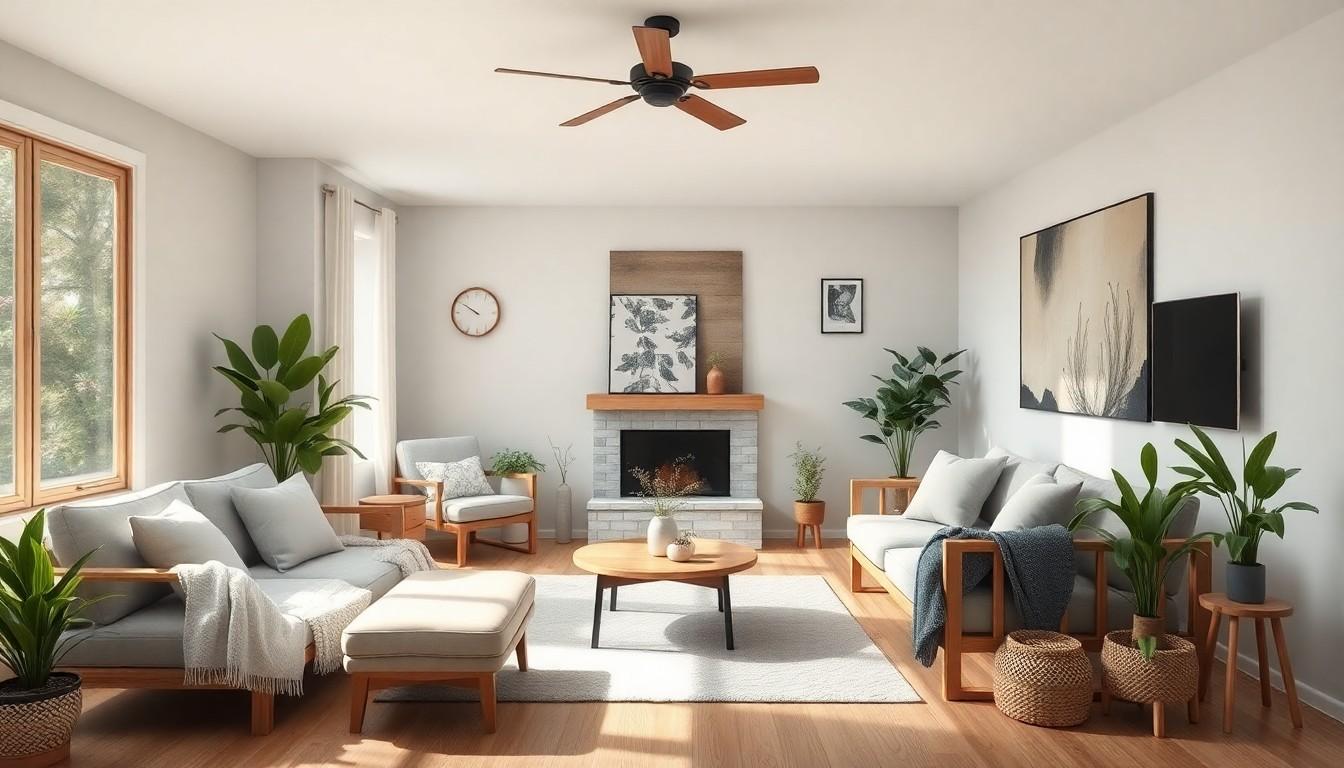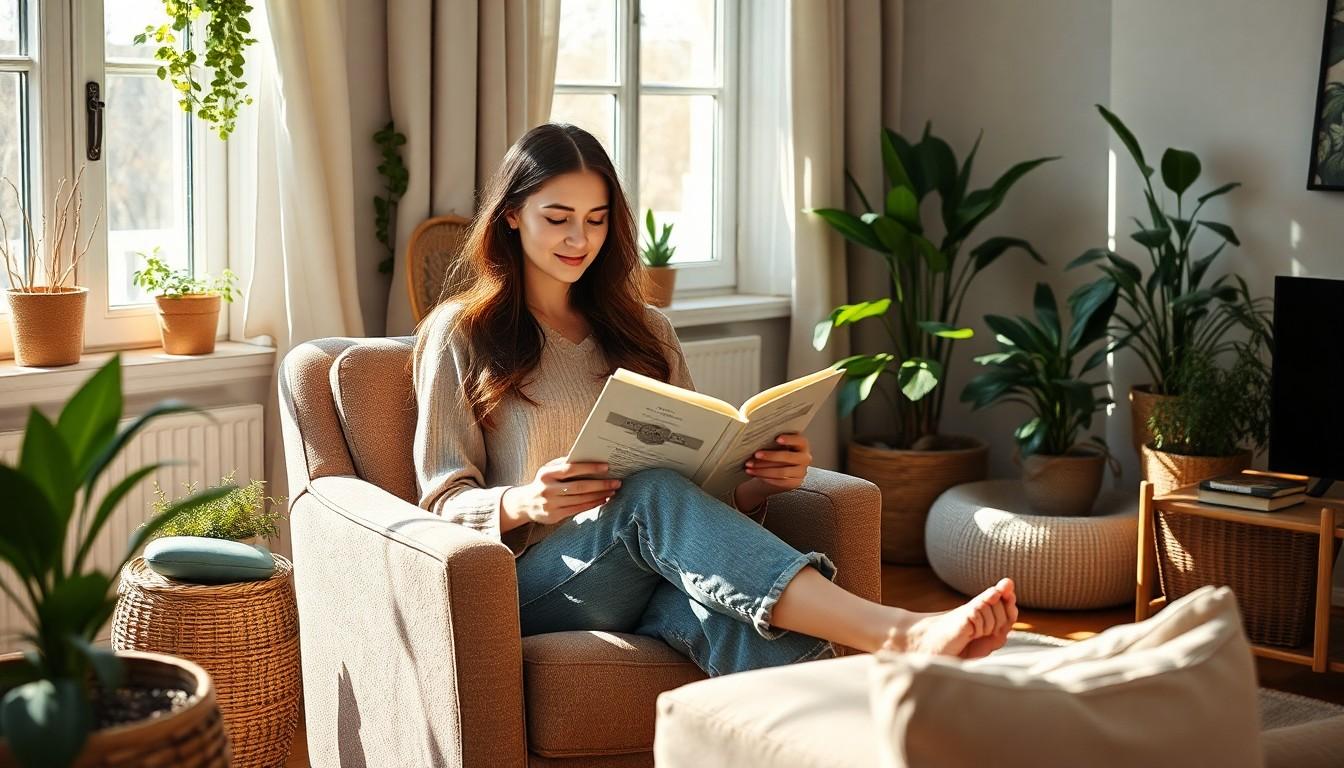In a world that moves faster than a caffeinated squirrel, the concept of slow living at home is like a breath of fresh air—or maybe a cozy cup of herbal tea. It’s all about embracing simplicity and savoring life’s little pleasures, from curling up with a good book to enjoying a leisurely dinner with loved ones. Imagine trading in the chaos for a sanctuary that invites relaxation and mindfulness.
Creating a slow living home isn’t just a trend; it’s a lifestyle choice that promotes well-being and peace. With a few intentional changes, anyone can transform their space into a haven that encourages them to hit the pause button. So why not take a step back, slow down, and discover how a few mindful adjustments can lead to a more fulfilling life? Your future self will thank you—and maybe even offer you a slice of homemade pie.
slow living home
Slow living at home fosters a lifestyle marked by simplicity and mindfulness. Individuals create peaceful environments that encourage relaxation and enjoyment.
What Is Slow Living?
Slow living embodies a lifestyle focused on mindfulness and deliberate choices. It encourages individuals to prioritize experiences over material possessions. Embracing this approach helps cultivate deeper connections with self and others. Slowing down allows for greater appreciation of daily moments, from sharing meals to enjoying nature. This lifestyle promotes sustainable living by advocating for intentional consumption and minimalism.
The Philosophy Behind Slow Living
The philosophy behind slow living highlights quality over quantity in life experiences. Emphasizing mindfulness, it encourages individuals to be present and fully engaged in activities. Reducing distractions enhances focus, allowing for richer moments. Furthermore, slow living aligns with values such as sustainability and community. This philosophy nurtures a sense of well-being by promoting self-care and fulfillment. Ultimately, it inspires individuals to live authentically and purposefully.
Key Aspects of a Slow Living Home

Creating a slow living home involves intentional choices that enhance simplicity and tranquility. Key aspects include minimalism, decluttering, and the use of natural materials.
Minimalism and Decluttering
Minimalism emphasizes the principle of “less is more.” It encourages individuals to evaluate their belongings, keeping only those that add value to their lives. Decluttering not only creates physical space, but also mental clarity. By reducing excess items, individuals experience less distraction and stress. This approach promotes a harmonious environment that fosters relaxation and mindfulness. Committing to a minimalist lifestyle leads to a greater appreciation of everyday moments.
Natural Materials and Sustainable Choices
Using natural materials contributes to an organic aesthetic within the home. Wood, stone, and cotton create a warm atmosphere that connects residents to nature. Sustainable choices underline the importance of environmentally friendly products, which support both personal health and the planet. Selecting items like bamboo furniture or organic textiles minimizes harmful impacts, fostering a sense of well-being. Prioritizing responsible purchases promotes a healthier lifestyle and encourages long-lasting relationships with home elements. This approach intertwines aesthetics with mindfulness, crafting a serene living space.
Benefits of Embracing a Slow Living Home
Creating a slow living home nurtures well-being and enriches daily experiences. It enhances mental clarity, strengthens relationships, and fosters a deeper appreciation for life.
Improved Mental Health
Slow living promotes mindfulness, which significantly improves mental health. Individuals practicing this lifestyle often experience reduced stress levels and anxiety. A serene home environment allows for greater relaxation, enabling one to recharge more effectively. Enjoying simple activities like reading or meditating can enhance emotional resilience. Moreover, intentional living encourages self-reflection, leading to improved emotional awareness and regulation.
Enhanced Family Connections
Practicing slow living strengthens family bonds through shared experiences and quality time. Dedicating time to enjoy meals together fosters communication and connection among family members. Creating a clutter-free, inviting space also encourages gatherings and laughter. Reducing distractions allows families to engage in meaningful conversations. Ultimately, prioritizing these moments leads to deeper relationships that enrich the home environment.
Tips for Creating Your Slow Living Home
Creating a slow living home requires intentional choices that emphasize simplicity and mindfulness.
Mindful Design Practices
Focus on decluttering first. Minimalist spaces promote tranquility and reduce distractions. Opt for neutral color palettes to enhance calmness. Each piece of furniture should serve a purpose and contribute to the overall serenity of the environment. Prioritize natural lighting by using sheer curtains or strategically placing mirrors to reflect light. Selecting versatile furniture that allows for easy rearrangement encourages adaptability and comfort. Mindfully assess each item’s value and emotional significance as you design.
Incorporating Nature
Integrating natural elements fosters a sense of peace. Use indoor plants to purify the air and enhance aesthetics, with options like snake plants or peace lilies. Wood accents, such as furniture or decor, create warmth and connect the space to the outdoors. Incorporate natural light as much as possible, ideally with large windows or skylights. Choosing earthy colors in textiles further evokes a serene atmosphere. Engage the senses with natural scents, perhaps through essential oils or fresh flowers. Prioritize items that bring a sense of harmony and tranquility to your living space.
atmosphere for relaxation
Embracing a slow living home transforms daily life into a more meaningful experience. By prioritizing simplicity and mindfulness individuals can cultivate a space that nurtures well-being. This intentional approach fosters deeper connections with loved ones and creates an inviting atmosphere for relaxation.
As they make mindful choices in their living environments they not only enhance their own quality of life but also contribute to a more sustainable future. The journey toward slow living is about appreciating the small moments and creating a sanctuary that reflects personal values. Ultimately this lifestyle choice leads to a richer more fulfilling existence where every day feels like a cherished gift.

